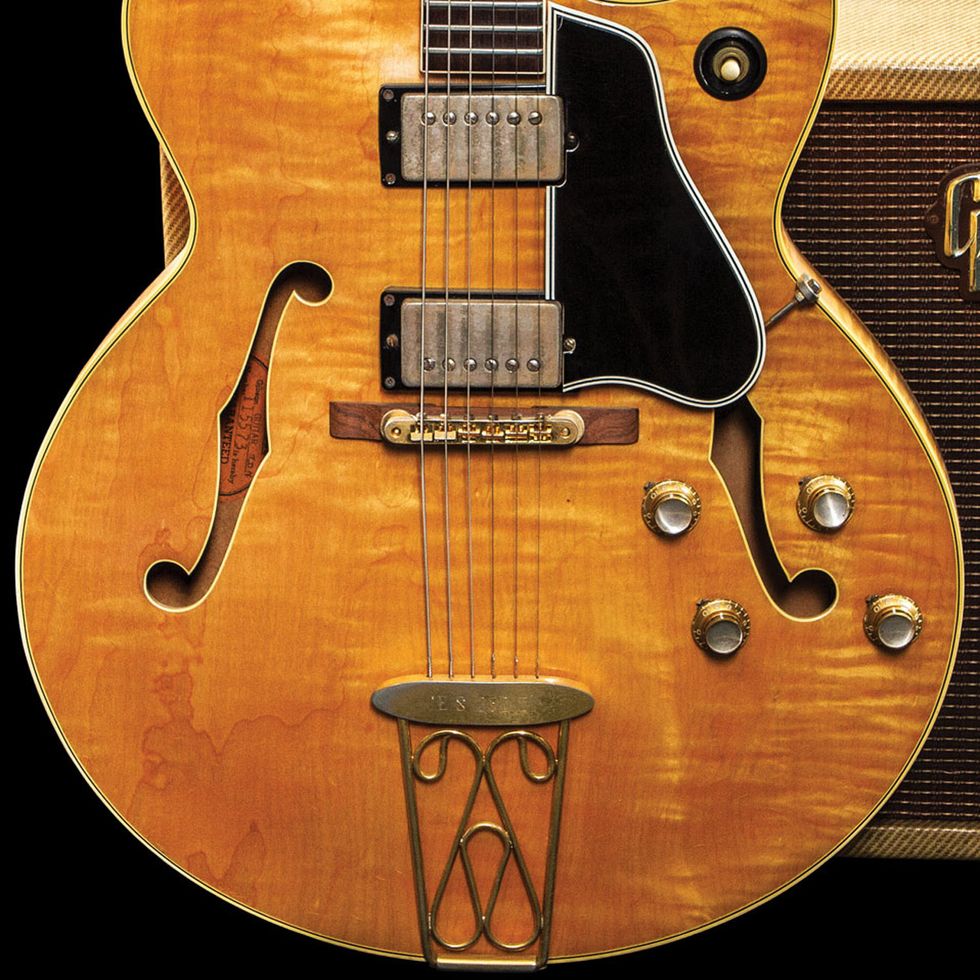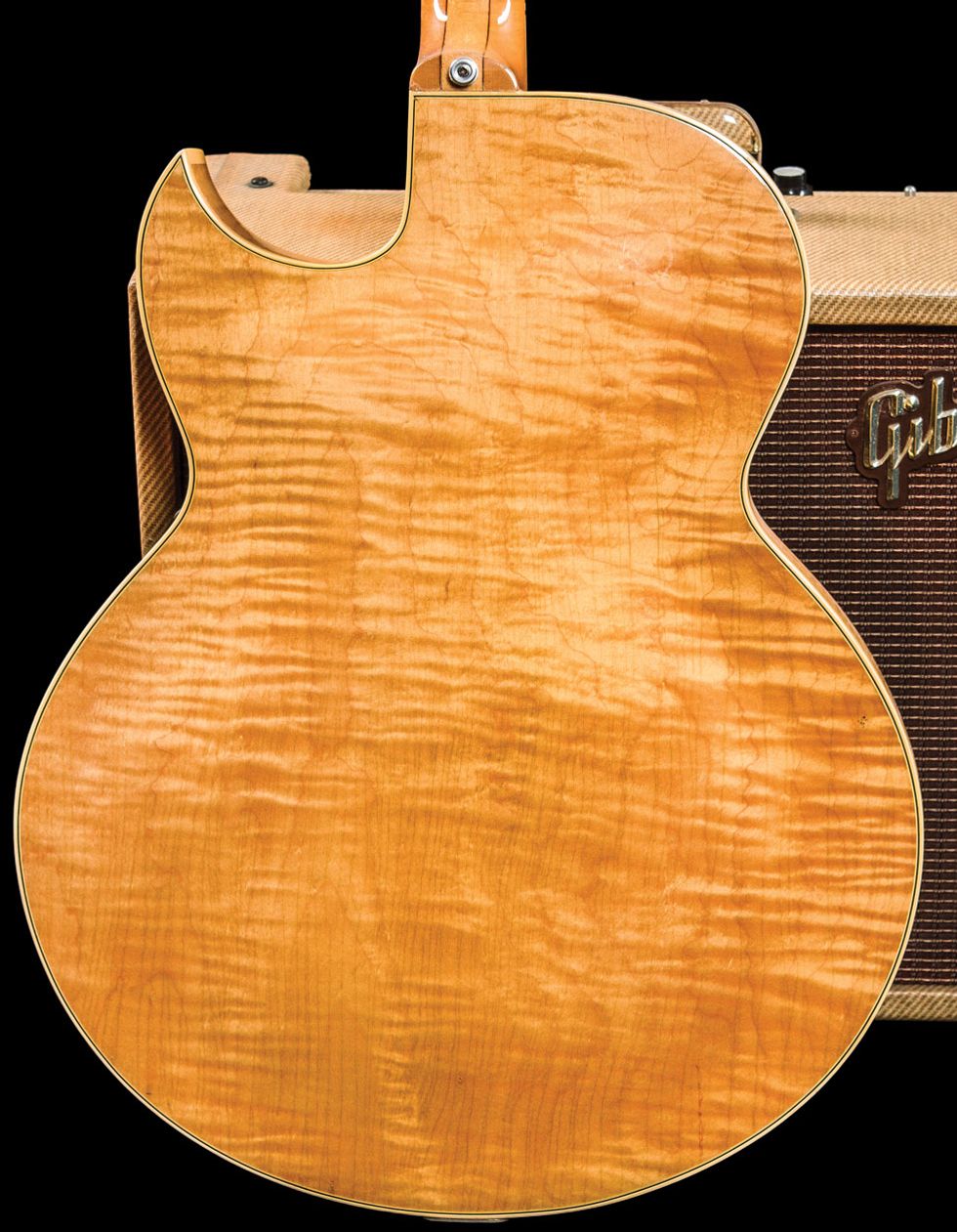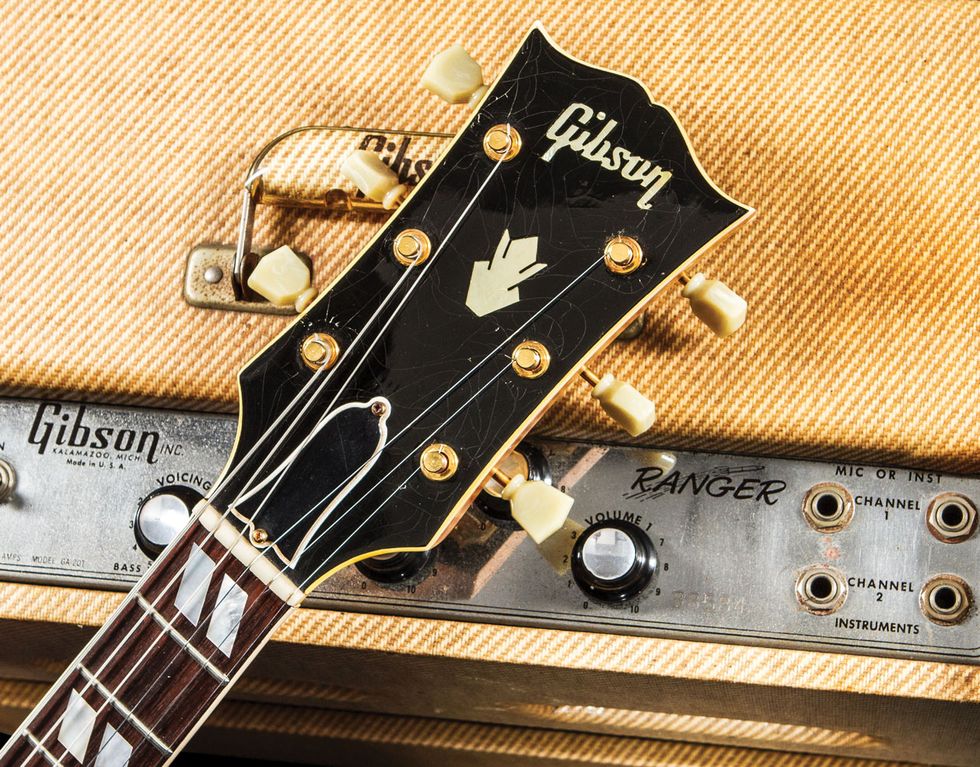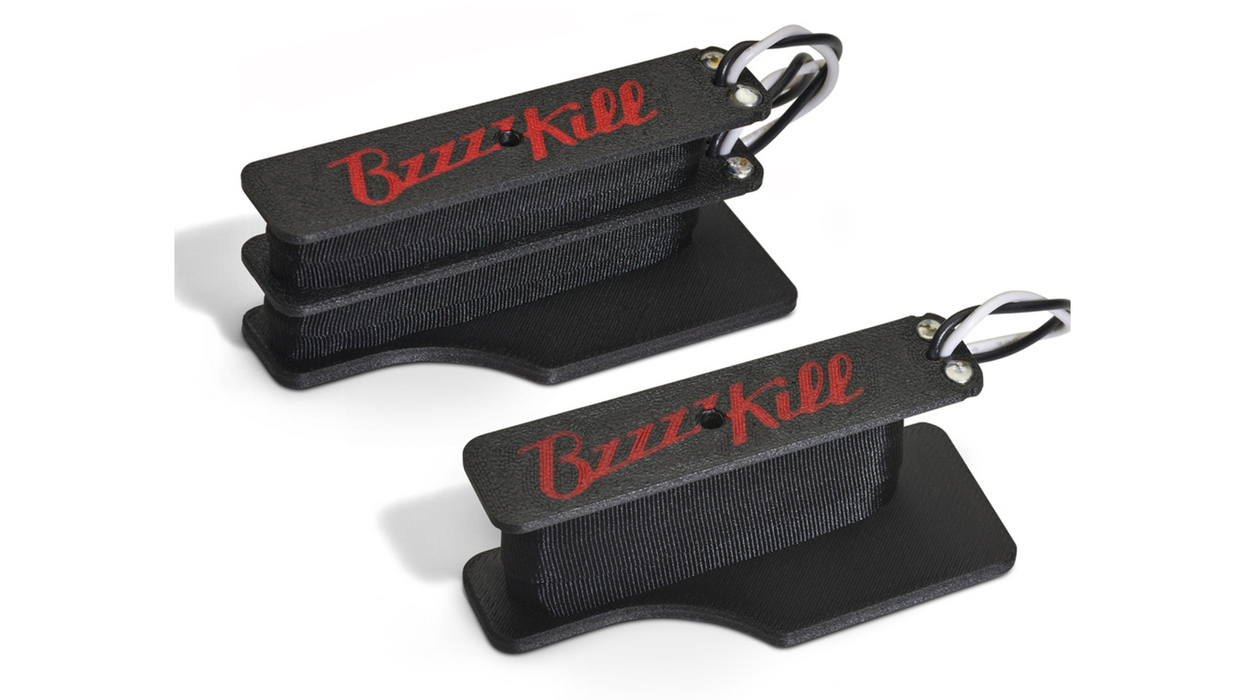After running into session guitarists Hank Garland and Billy Byrd at a Nashville disc jockey convention in 1955, Gibson developed a line of thin-bodied electric guitars using input from the two musicians. The guitars were marketed to players who wanted a smaller, more comfortable instrument, without the weight of a solidbody.
Gibson's initial thinline series of the mid '50s was made up of three guitars: the Byrdland, the mid-priced ES-350T, and the economy ES-225T. The high-end Byrdland was designed with contributions from Garland and Byrd, and its handle was obviously a combination of the two artists' last names. It was meant to be a thin L-5 CES (at 2 1/4" thick) with a shorter 23 1/2" scale neck, instead of the L-5's 25 1/2" scale.
Humbuckers replaced the ES-350TDN's initial double-P-90 configuration in 1957, but the hardware, including the tailpiece with the guitar's model number onboard, remained the same.
The ES-350T, which slimmed down the full-bodied ES-350, used the Byrdland's innovative measurements while retaining many of the 350's cosmetic and structural features. With its laminated maple top, back, and sides, the guitar was intended to be a more affordable version of the Byrdland, priced $155 cheaper in its debut year. The 1962 Gibson catalog describes other details of the ES-350T: “Matching the all-around excellence of Gibson performance, this distinctive instrument has a thin, narrow, short-scale neck. The choice of many professionals who acclaim these design features, which permit the use of many chords previously beyond reach. Beautifully finished arched top and back of highly figured curly maple with matching curly maple rims, ivoroid binding, and gold-plated metal parts."
The figured maple on this guitar's back shows zero damage from belt rash or other blemishes, adding to its charisma.
The nicely figured, natural finish 1963 ES-350TDN featured this month has all the characteristics of the final edition of the model, before its discontinuation that year. (A full-scale version was reissued in 1978.) These include gold hardware, two humbucking pickups (which replaced P-90s as standard-issue in 1957), a deep Florentine cutaway (which replaced the rounded Venetian-style cut in 1961), a 3-piece maple neck (which replaced the original 2-piece in mid-1962), a rosewood fretboard with split parallelogram markers, and a crown-inlayed headstock. TDN, by the way, stands for thinline, double-pickup, neutral finish.
Note the GA-20T Ranger's voicing dial, to the left of the headstock. It's a glorified tone control that works this way: 1, in the center, is neutral, while 5, on the left, is darkest and 5 on the right is brightest.
The 1962 Gibson price list has the natural finish ES-350T at $500. A 603 Faultless, plush-lined case was an extra $56. The current value for one in excellent, all-original condition is $7,500. The amp is a 1961 Gibson GA-20T Ranger. Two 6V6 power tubes push 16 watts through a Jensen P12R speaker. This tweed covered amp has five control knobs. The voicing dial controls the tone (1, in the center, is neutral, while 5, on the left, is darkest and 5 on the right is brightest), the volume 1 knob works for the channel with no tremolo, while volume 2 controls the tremolo channel. And, of course, depth regulates how strong the tremolo signal is and frequency manages the speed of the tremolo. The original price was $169.50. The current value is $1,000.
Sources for this article include Gibson Electrics—The Classic Years by A.R. Duchossoir, Gibson Guitars: Ted McCarty's Golden Era 1948-1966 by Gil Hembree, The Gibson Guitar From 1950: Volume 2 by Ian C. Bishop, Gibson Amplifiers 1933–2008: 75 Years of the Gold Tone by Wallace Marx Jr., and the 1962 Gibson catalog.



















![Rig Rundown: Russian Circles’ Mike Sullivan [2025]](https://www.premierguitar.com/media-library/youtube.jpg?id=62303631&width=1245&height=700&quality=70&coordinates=0%2C0%2C0%2C0)








